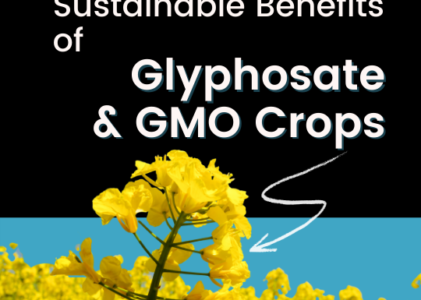Improved agricultural sustainability runs counter to environmental organization messages
Anyone who has flown over the Canadian prairies in any of the previous summers will notice the tremendous number of yellow fields. When canola fields flower, they certainly stand out and are highly visible from any vantage point. One thing that many may not realize is that 30 years ago, many of those currently yellow fields were brown or black, depending on the soil type, as these fields were being summerfallowed to control weeds. To better understand what has changed regarding crop rotations and land use over the past 30 years, my research team and I led an extensive survey of Saskatchewan farmers during the 2020-21 winter.
Surveying to complete our dataset
One of the challenges of research in Canadian agriculture is the availability of data surrounding the changing agronomic practices. What data is readily available is expensive and not complete. To overcome this challenge, we developed a four-part survey that included questions on crop production (seeding to harvest), tillage practices and the use of both fertilizers and chemicals. We used the same survey to gather data for two distinct periods, 1991-1994 and 2016-2019. Through an online survey we collected data from 127 different farms, which provided good provincial representation and is comparable in size with other datasets of a similar nature. The article is freely available at Sustainability, check it out to learn more about the representation of farmers.
Drivers of sustainability
Since the 1990s, there have been many advancements, changes, and pushes towards more environmental and sustainable practices, which have also occurred throughout agriculture. Numerous advancements have contributed to reducing the impact agriculture has on the environment, including new equipment, new crops and varieties and data software, among others. Of these advancements, HT crops and glyphosate were among the easiest to access and quickly implement, but have they actually had significant impacts on sustainability? To quantify which of these technologies adopted by farmers were perceived as improving sustainability (reduced tillage and summerfallow), we directly asked to what extent these technologies contributed to reducing tillage and summerfallow, processes that release carbon from the soil. Farmers responded using a scale of 1-10, with 1 being ‘did not at all faciliate’ and 10 being ‘played a major role’. Of all the options, farmers’ responses were exceptionally positive in support of glyphosate (average of 9.0 out of 10) and herbicide tolerant (HT) canola (7.3) for facilitating reduced tillage and summerfallow. Whereas, other HT crops (5.2) had less of an impact, which is not surprising as the adoption rate of other HT crops is not as large as canola has been in Saskatchewan.
Having farmers confirm that glyphosate and herbicide tolerant crops drive the reduction of tillage and summerfallow practices, which increases environmental sustainability isn’t going to be well received by environmental organizations. Especially considering that HT crops are often also genetically modified (GM) crops and glyphosate is a chemical that is often used in association with GMHT crops. Both of these beneficial agricultural technologies are fundamentally opposed by numerous organizations. Our survey evidence confirms that many environmental organizations demonstrate considerable degrees of hypocrisy as they call for increased sustainability, but then turn around and reject the use of the very technologies responsible for increased sustainability.
We also provided farmers with the opportunity to comment on what they perceived would change on their farm if access to glyphosate or HT crops were lost. A few of the concise and insightful responses are provided.
- “Zero till farming would be very difficult or next to impossible.”
- “Could not farm the way we do. Glyphosate enables zero tillage and has reduced soil erosion to near zero. It is critical for soil health.”
- “We would likely struggle to keep a 3-year rotation as both canola and lentils would be poor weed competitors with very limited herbicide options.”
- “More tillage would be needed again and with it more erosion and moisture loss.”
Clearly, the farmers that we were able to survey in Saskatchewan view and use HT crops and glyphosate in combination as an agronomic asset. Given that farmers see the utility in their use, these agronomic advancements are already viewed as successes in increasing production, alongside also being able to reduce tillage, therefore reducing carbon emissions from the soil. But to what extent have these practices had on the sustainability and reducing the carbon emissions of crop production?
Increased carbon sequestration
Between 1991-1994, when results are scaled up to represent the whole province, crop rotations including tillage as a form of weed control resulted in annual carbon sequestration by the soil of 228,000 tonnes. Carbon sequestration over the 2016-2019 period has increased to 8.2 million tonnes annually. Put another way, a 1000 ha farm in the 1991-1994 period would have sequestered carbon equal to the emissions from 12 cars annually. In the 2016-2019 period, that same farm would sequester carbon equivalent to the emissions of 432 cars.
Saskatchewan crop agriculture has demonstrated that it has become a significant carbon sink. To better understand the changes in greenhouse gas emissions and carbon sequestration, my team and I are expanding the survey to Alberta and Manitoba farmers this winter. We are also welcoming any Saskatchewan farmers that weren’t able to participate last winter and that would like to do so this winter. If you are interested learning more about Jordan or his research, follow the hyperlinked text. You can also now register to participate in the online survey at: https://www.surveymonkey.ca/r/CRSPrairieRegistration2021.


